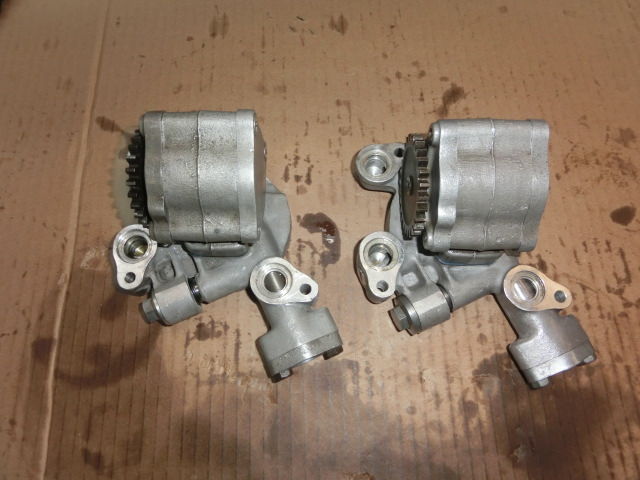I finally had a significant amount of time to do some work over the weekend. I was hoping to make some real progress for a change. Not to be (as you will soon see).
I first decided to wrap up the oil pump. I had the three sandcast bodies and bases hot tanked and ultrasonically cleaned. There was a lot of thick sludge in the passageways and I wanted to make sure they were clean. The early one still looks pretty rough but I decided to reassemble the other two. The check valve holes were varnished up so I ran a 12mm reamer into them to clean them out and then polished them up a bit. Then I picked the best sets of rotors and other parts from six pumps and measured everything (bores, ODís, thicknesses, depths, feeler gauge clearances) to make sure all was in spec. I used the cream of the crop for the pump Iím putting in E100. Also new seals, springs and oil stopper valves for both.

I liberally oiled everything and put them together. The one slated for E100 went together perfect and feels great. Then the second pump not so much. I could feel a little catch at certain points when I rotated the gear. Took it apart several times and re-inspected everything and even changed pins, rotor sets, etc. I finally gave up for now and put a tag on it so I wonít forget and will get back to it later. I probably should have just moved on right away since the second pump isnít helping with this project but Iím trying to come up with a way to test them and it would be nice to do both. Instead I ended up wasting the better part of the afternoon.


So I decided to finish up with the main shaft and clutch. Everything went well until I got to the clutch. Somehow I ended up with the wrong (incorrect, they would still work but correct for later clutches) friction plates and clutch springs (too long). I still havenít figured out if I ordered the wrong ones or just got the wrong ones. Sometimes itís frustrating not being able to just finish something.

Mark B1969 CB750 sandcast #97 restored - Sold
Restoration thread link1969 CB750 sandcaxt #576 - Sold
1969 CB750 sandcast #1553 - Sold
1969 CB750 sandcast #1990 - Sold
1969 CB750 sandcast #5383 restored - Sold
Restoration thread link1970 CB750 K0 restored - Sold
2010 H-D Tri Glide Ultra Classic (Huh?)